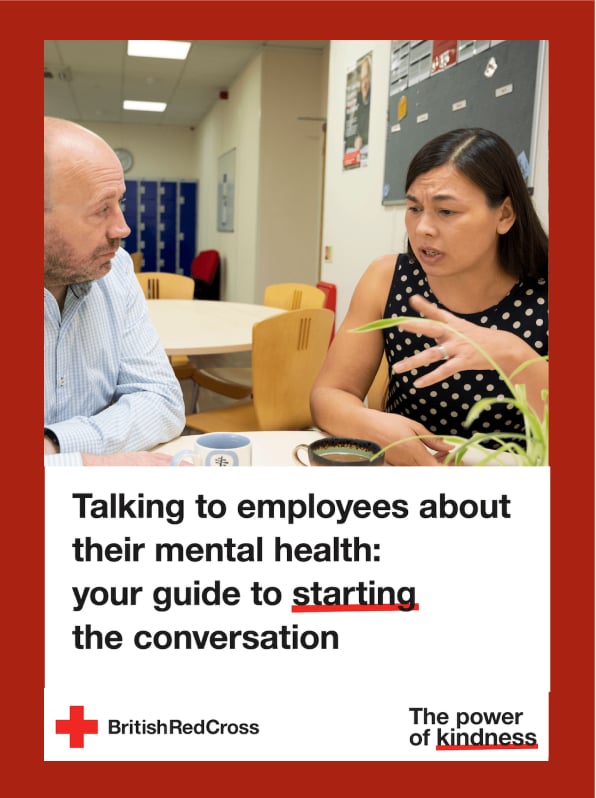Despite improved efforts being made by a number of employers, poor mental health at work remains a real challenge for UK employers both in terms of costs to business but also general employee wellbeing. In this article, we look at what contributes to the overall cost of poor mental health at work, and offer advice on how to ensure you’re providing a supportive and open working environment.
Research conducted in early 2020 found that poor mental health at work costs UK employers up to £45 billion each year. A rise of 16% since 2016, the report shows that mental health still remains a huge issue for many businesses across the country.
Clearly, something needs to change. Increasingly, more businesses are becoming enlightened to the impact that poor mental health is having on their workforce. However, being aware of the issue is only the beginning.
60% of employees say they’d feel more motivated and more likely to recommend their organisation as a good place to work if their employer took action to support mental wellbeing - this is a clear indicator that investment is needed to help support positive change.
What contributes to the cost of poor mental health in the workplace?
Research suggests that while attempts to improve wellbeing in the workplace have been made (such as more greenspace, and increased openness surrounding mental health), since 2016, costs associated with poor mental health are continuing to climb.
This perhaps shows that while employers are making an effort through various incentives and employee benefits, they’re still not getting to the root of what causes employees to have poor mental health at work.
It’s difficult to pinpoint exactly what contributes to the overall cost of poor mental health at work, but we can identify some of the most likely causes, such as:
- “Presenteeism”
This phrase is used to describe the common phenomenon of employees that continue to turn up to work, even if they’re ill or not at their most productive for another reason. “Presenteeism” is often thought to be a manifestation of insecurity surrounding work, and continues to pose a real challenge for businesses.
- An “always-on” mentality
Generally, this mindset occurs in industries where working longer hours than average is normalised, or where suspicion from upper management surrounding absence is common. Employees may feel pressured to continue working out of hours, and to some extent, this mentality has worsened because of technology.
Problems such as these often lead to a higher turnover of staff due to poor mental health resulting in additional recruitment costs. In order to avoid this, employers need to address root causes such as those mentioned above, and take the steps necessary to create a more supportive, healthy working environment.
Develop an organisation-wide mental health strategy
The first step to improving employee wellbeing is developing a clear, organisation-wide mental health strategy - starting at the very top of your business.
This means beginning with leadership attitudes, and addressing any mental health stigma in upper management. Then, developing clear policies that incorporate what is known as the “mental health core standards”.
Set out in Thriving at Work: a review of mental health and employers, the mental health core standards are a framework for a set of actions which all organisations in the country are believed to have the capability to implement quickly with little or no cost. These are as follows:
- Produce, implement and communicate a mental health at work plan
- Develop mental health awareness among employees
- Encourage open conversations about mental health and the support available when employees are struggling
- Provide employees with good working conditions and ensure they have a healthy work-life balance and opportunities for development
- Promote effective people management through line managers and supervisors
- Routinely monitor employee mental health and wellbeing
These mental health core standards are drawn from best practice and evidence, and set the framework for how you can develop your wider mental health strategy.
Take the first steps to a supportive culture
Download your copy of 'Talking to your employees about their mental health: your guide to starting the conversation'.
Consider your physical work environment
Unsurprisingly, your physical work environment can have a significant impact on your mental health. Inadequate work environments often lead to increased stress, which could result in numerous problems for both individuals and the wider business.
That’s why mental health should be incorporated into practices such as health and safety, as well as risk and first aid assessments - so you can get a better understanding of how the workplace itself is impacting the mental health of employees.
For example, the amount of light, greenspace and fresh air employees have access to is important for their wellbeing - as is the amount of noise and quiet space available. If you don’t have enough of these things, you’ll need to make sure your workplace accommodates them. While it may not always be possible to rectify any issues immediately, you can put plans in place to address any problems.
Offer genuine employee benefits
One way to reduce costs associated with poor mental health is to offer genuine benefits to employees that will positively impact their mental wellbeing.
This means not treating mental health initiatives as a “tick box” exercise that doesn’t consider how employees will realistically benefit. While many businesses will offer “work perks” such as free tickets or drinks while in the workplace - benefits such as these shouldn’t be the only part of your mental health strategy. Instead, employers should consider what they can offer that goes beyond subsidised gifts - such as mental health days or additional annual leave, employee assistance programmes and access to healthcare.
Genuine employee benefits such as these often more than pay for themselves in the long run, as you’ll likely see a more engaged, healthy and motivated workforce.
Improve communication
One of the key issues linked to poor mental health at work is the reluctance to talk about it in a professional setting. After all, discussing difficult situations is uncomfortable. Unless you have the training to support people, you will probably feel out of your depth. However, seeking to improve general communication will go a long way in making all employees feel better supported.
You can do this by using technology to communicate with employees working remotely, running 1-to-1s with individual employees to catch up, and providing a support network where staff know who to approach when they have a problem.
Additionally, encouraging employees to be more open, through leading by example can be really helpful. If employees see management taking mental health seriously, and even discussing their own challenges, they’re more likely to be open about their own wellbeing. Then, you’re able to work together to address any issues.
Working openly together will help you foster a more supportive environment - and perhaps avoid other business challenges that can arise out of poor communication.
That being said, to improve communication across your organisation, you’ll likely need to learn how to do it effectively - bringing us to our final suggestion.
Learn how to recognise poor mental health
Arguably, the most important thing you can do to make a difference in your organisation is to actively learn how to recognise when there is a problem - be it for an individual, or across the whole business.
After all, unless you have a full understanding of what your employees may be going through, you won’t know how best to meet their needs. Chances are, most of the issues surrounding mental health at work aren’t intentional, but instead due to a general lack of understanding.
That’s why we’ve created a free guide to help employers learn how to spot mental health issues at work, so you can better assess how exactly you can help. This handy guide details 5 key warning signs that your employees may need more support, and offers actionable tips on what to do if mental health issues are affecting your workplace.
Topics: Mental health & wellbeing




